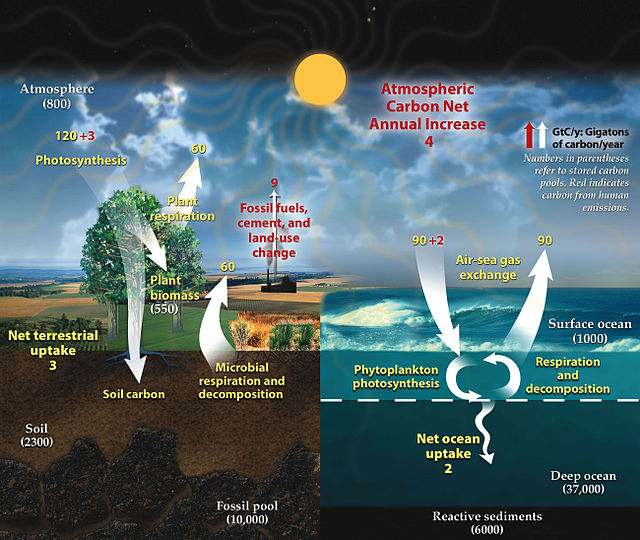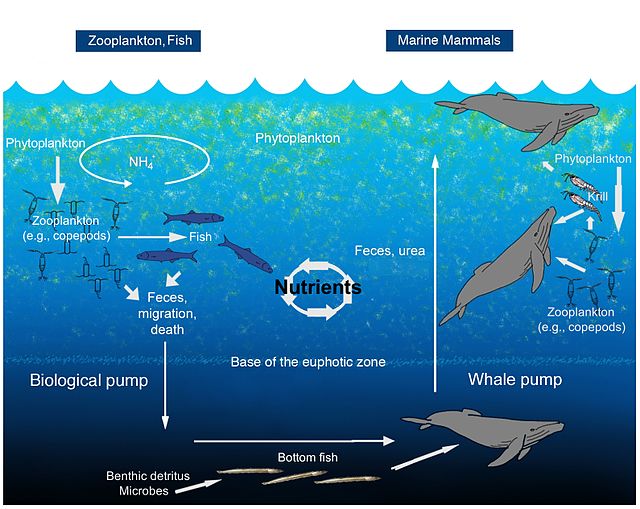The carbon cycle is that part of the biogeochemical cycle by which carbon is exchanged among the biosphere, pedosphere, geosphere, hydrosphere, and atmosphere of Earth. Other major biogeochemical cycles include the nitrogen cycle and the water cycle. Carbon is the main component of biological compounds as well as a major component of many minerals such as limestone. The carbon cycle comprises a sequence of events that are key to making Earth capable of sustaining life. It describes the movement of carbon as it is recycled and reused throughout the biosphere, as well as long-term processes of carbon sequestration (storage) to and release from carbon sinks.
Fast carbon cycle showing the movement of carbon between land, atmosphere, and oceans in billions of tons (gigatons) per year. Yellow numbers are natural fluxes, red are human contributions, and white are stored carbon. The effects of the slow (or deep) carbon cycle, such as volcanic and tectonic activity are not included.
A portable soil respiration system measuring soil CO2 flux.
Where terrestrial carbon goes when water flows
How carbon moves from inland waters to the ocean Carbon dioxide exchange, photosynthetic production and respiration of terrestrial vegetation, rock weathering, and sedimentation occur in terrestrial ecosystems. Carbon transports to the ocean through the land-river-estuary continuum in the form of organic carbon and inorganic carbon. Carbon exchange at the air-water interface, transportation, transformation and sedimentation occur in oceanic ecosystems.
A biogeochemical cycle, or more generally a cycle of matter, is the movement and transformation of chemical elements and compounds between living organisms, the atmosphere, and the Earth's crust. Major biogeochemical cycles include the carbon cycle, the nitrogen cycle and the water cycle. In each cycle, the chemical element or molecule is transformed and cycled by living organisms and through various geological forms and reservoirs, including the atmosphere, the soil and the oceans. It can be thought of as the pathway by which a chemical substance cycles the biotic compartment and the abiotic compartments of Earth. The biotic compartment is the biosphere and the abiotic compartments are the atmosphere, lithosphere and hydrosphere.
Generalized biogeochemical cycle
The oceanic whale pump showing how whales cycle nutrients through the ocean water column
Beach scene simultaneously showing the atmosphere (air), hydrosphere (ocean) and lithosphere (ground)
Some roles of marine organisms in biogeochemical cycling in the Southern Ocean








